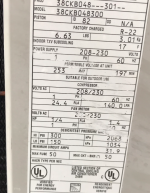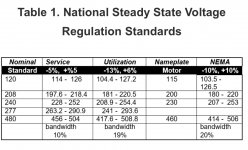Open Neutral
Senior Member
- Location
- Inside the Beltway
- Occupation
- Engineer
I've always thought it was 240V +/- 10%..
But a HVAC manufacturer is claiming 250V is outside their spec. I'm dubious of any reason besides "We don't want to pay a warranty claim on this.." but thought I'd confirm.
But a HVAC manufacturer is claiming 250V is outside their spec. I'm dubious of any reason besides "We don't want to pay a warranty claim on this.." but thought I'd confirm.


